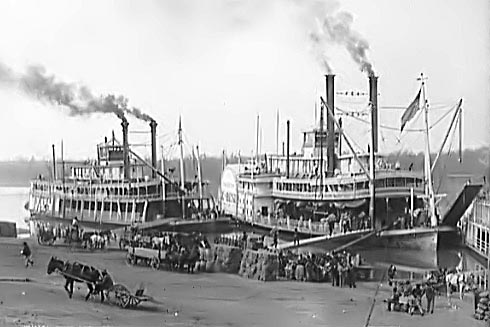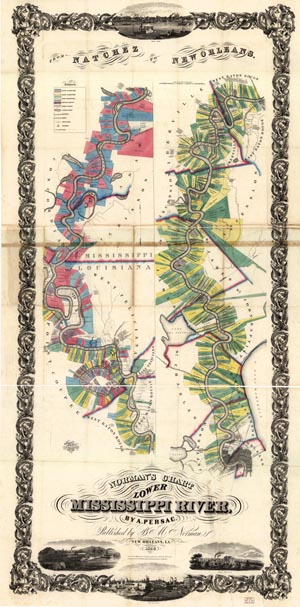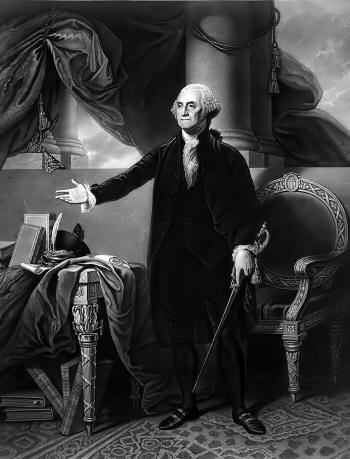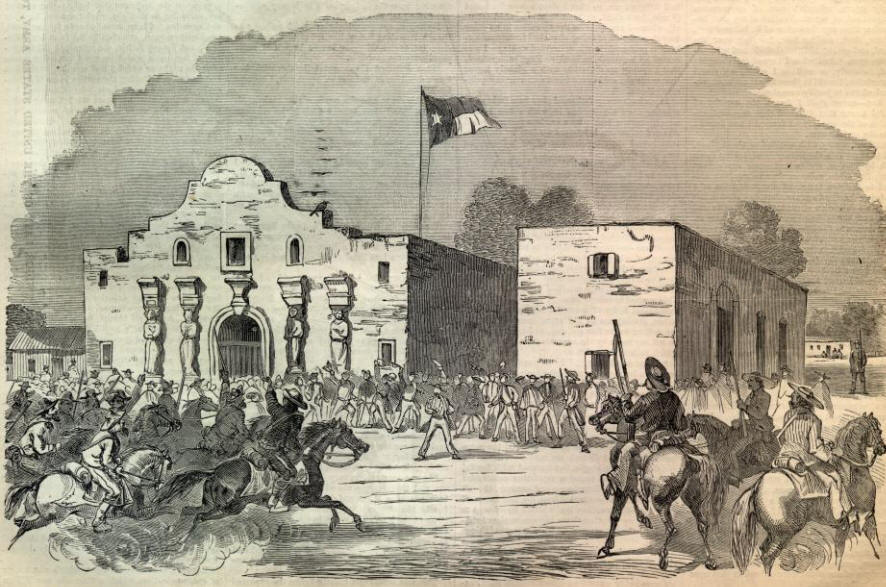Free Navigation of the Mississippi River
![]()
This Site:
The History of Texas: Free Navigation of the Mississippi River(Previous Section: Texas During the French and Indian War)
Mississippi River BoatsDURING the American Revolution, Texas was quiet. She was safe from danger. Her harbors were unknown; her poverty offered no temptation for pillage; her scattered population could afford no recruits. Yet, when Spain declared war against England in 1779, and Don Jose Galvez, then governor of Louisiana, engaged in active hostilities, the province of Texas contributed her mite of soldiers for his armies, and joined with Louisiana in rejoicing over his victories at Natchez, at Fort Amity, Fort Charlotte, Mobile, and Pensacola.*
The Congress had taken strong ground on the subject. So early as June, 1784, they had resolved that our ministers should negotiate no treaty with Spain by which they should relinquish or cede, in any event whatever, the right of the citizens of the United States to the free navigation of the Mississippi from its source to the gulf of Mexico. At the close of the American Revolution, Spain and the United States were good friends, and sincerely so. The former had done much to achieve that independence which the Union enjoyed. General Don Jos Galvez, then a powerful personage at the court of Madrid, was warmly devoted to the United States. Through his influence, his uncle, Don Diego de Gardoqui, was appointed minister to the new republic. The Spanish government had also manifested its good will by releasing from slavery in Algiers many of our citizens who had been taken by the corsairs. Galvez and Gardoqui sailed in the same vessel to Havana—the latter on his way to the United States, the former to take charge of his captain-generalcy of Cuba. Gardoqui was empowered to treat of boundaries, etc., but directed to consult Galvez. Under these circumstances, so auspicious, it might be inferred that the boundary-line, and also the navigation of the Mississippi, could be speedily settled. The territory and the rights claimed by the two powers had but lately come into their hands; neither of them, therefore, could treat it as an heirloom. To understand the points at issue, let us refer to facts. The commerce of the Mississippi river had rapidly increased, even during the Revolution; but after its close, the trade on the great stream had become indispensable to the new settlers on its upper tributaries, and they were not the people to surrender a right resting upon a law of nature. It became necessary to the existence of the Union that this right should be preserved; but, as Spain owned both banks of the lower Mississippi, she claimed the right to its exclusive use: and the simple right of navigation to the ocean would have been impracticable without also a place of deposit. In regard to boundaries, it will be remembered that, in the treaty of 1762, Spain had ceded Florida to England; that, in the treaty of January 20, 1783, that province was retroceded to Spain; but, in the treaty of November 80, 82, between England and the United States, the former ceded to the latter all the territory east of the Mississippi down to the thirty-first parallel of latitude; whereas Spain claimed, as part of Florida, conquered by her arms, all the territory at least as high up as Natchez, and the settlement around that place. The treaty of November 30, 1782, being anterior to that between England and Spain, the latter being an ally of the United States, and the disputed territory being within the chartered limits of Georgia, clearly gave the United States the best right. What was the object of Spain in thus contesting so strongly the right of the United States to this territory north of the thirty-first parallel of latitude, and the joint use of the Mississippi river? The answer is found in the correspondence between the French ambassador at Madrid and his government. "The cabinet of Madrid," says he, "thinks it has the greatest interest not to open the Mississippi to the Americans, and to disgust them from making establishments on that river, as they would not delay to possess themselves of the commerce of New Orleans and Mexico, whatever impediments should be opposed to their progress, and that they would become neighbors the more dangerous to Spain — as, even in their present weakness, they conceive vast projects for the conquest of the western shore of the Mississippi." He further adds that "Spain is decided to make the savages a barrier between her possessions and those of the Americans." The discussion of these questions continued between the United States and Don Diego Gardoqui until the adoption of the federal constitution in 1787, neither party being willing to give ground. In the meantime, the settlers in the present states of Kentucky, Tennessee, and Mississippi, were taking the matter into their own hands. Such men as George Rogers Clark, James Wilkinson, Thomas Green, and William Blount, had determined', at all events, to remove the Spaniards. It was in vain that the federal government endeavored to restrain them. They replied, in language not to be misunderstood—"If the United States did not open to them the navigation of the river, they would do it themselves. Thirty-first Parallel Becomes Southern Boundary of the United States
American Adventures Begin to Explore TexasThe Spanish settlement at Natchez, meanwhile, had opened and kept up an intercourse with Texas, through Natchitoches. This road had become familiar to many besides the Spaniards. On their return, they would make known to the Americans at Natchez the advantages of the trade in Texas, the surpassing beauty and richness of the country, the abundance of the game, and the thousand other attractions to adventurers. All these recitals, so novel to the pioneers who had marched to the extreme limits of the United States on the Mississippi, excited in them a curiosity, a love of adventure, and a desire to see the Texan region, which the dangers incident to the journey served only to increase. The Indians in Texas had again become troublesome. The Franciscan fathers had not met with the desired success in civilizing them; nor were the forces at the posts sufficient to overawe them. In fact, it is not improbable that the missionaries would have succeeded better without the soldiers: so little does the arm of God need an arm of flesh to propagate his gospel ! Such was the daring impudence of the Comanches, that the troops at the Alamo were compelled for safety, in 1785, to remove their tents within the mission walls. This venerable mission, the second in Texas, deserves some consideration. History of The Alamo MissionThe Alamo was first founded in the year 1703 by Franciscans of the apostolic college of Queretaro, in the valley of the Rio Grande, under the invocation of San Francisco Solano. Here it remained for five years, but for some reason was removed to a place called San Ildephonso, where it seems to have remained till 1710, at which time it was moved back to the Rio Grande, and reinvocated as the mission of San Jose. Here it remained under the guidance of the good father Jose de Soto till the 1st of May, 1718, when, on account of the scarcity of water, it was removed to the west bank of the San Pedro, about three fourths of a mile northwest of the present parish-church of San Antonio. Here it remained, under the protection of the post of San Antonio de Valero, whose name it assumed, until 1722, when, on account of troubles with the Indians, it was once more removed, with the post, to what is now known as the Military Plaza. The main square, or Plaza of the Constitution, was formed in 1730 by the colonists sent out at the request of De Aguayo. The establishment around the Military Plaza was in May, 1744, the people, tired of the lawsuit between the ex-governors Sandoval and Franquis, laid the foundation of the church of their old mission, where it now stands unfinished, as the church of the Alamo.
The AlamoIt had been seeking a resting place for nearly half a century, and it was time that it should find one. From this period until 1783 it was still known and conducted as the mission of San Antonio de Valero. In the meantime, the number of Indians under its charge increased, and, as they became civilized, were settled around the mission, thus forming a town on the east side of the river. The company of San Carlos de Parras was stationed there for the protection of the town and mission. It enjoyed a separate organization, and had its own alcalde, and place of worship. But, about this lastnamed period, the place ceased to be a missionary station. All the Indians brought in for conversion had for some time previously been taken to the missions below the town—perhaps the better to secure them against its corrupting influences; so that, having no further missionary work to perform, San Antonio de Valero became an ordinary Spanish town, and the old missionary church of the Alamo became a common parish-church. On the 2d of January, 1793, the bishop of Monterey directed the church-records of the mission to be passed to the curate of San Antonio de Bexar. Accordingly, it was done the ensuing August, by Father Lopez, the last of the noble followers of St. Francis that had labored as a missionary in the Alamo. And, on the 10th of April, 1794, Don Pedro de Nava, governor of Chihuahua, whose jurisdiction also extended over Texas, secularized all the missions within the two provinces; by which all the temporalities of the missions were taken out of the hands of the friars, and delivered to the civil officers of Spain. The people of the missions, however, were not left destitute; for, by the same decree, the mission-lands were divided among them, and titles given to each man. The Adaes, after the abandonment of that post by the Spanish troops, continued to languish till 1790, when it was broken up and deserted, and the inhabitants removed to San Antonio, where places were assigned them on the east bank of the river, north of the Alamo; and titles were also extended to them of the irrigable lands between the Alamo ditch and the river. This spot is still known as the Labor de los Adaesenos. The reforms introduced by Galvez, and the general increase of commerce in the Mexican gulf, had called the attention of the public authorities to Aransas bay. Copano had been for some time a place of landing, principally for smuggling-vessels. To watch these illicit movements, the mission of our Lady of Refuge was located on Mission river, some ten miles above Copano, in the direction of La Bahia. But little progress, however, was made, either in the conversion of the Indians or in building up the mission. A corporal with a guard was stationed there, and, instead of assisting in the work, took possession of the comfortable quarters erected by the father and his Indian flock; and instead of remaining in front of the mission, to guard it, took shelter under its pickets; and, instead of aiding in the instruction of the Indians, were imparting to them what they ought not to know. Mission La BahiaThe mission at La Bahia had met with some success. It served at least as a settlement, and a place of defense. The fathers were kind to the Indians, which treatment met with no bad return. This was evinced in afteryears, when the latter, flying from the Anglo-Americans, took refuge at La Bahia. Such was the situation of Texas toward the close of the 1700's, and but little in advance of what it had been seventy-five years earlier. But the American Revolution had changed the face of things. A spirit was invoked that could not be allayed: it was one of liberty of thought and action—of inquiry and progress. It soon found its way to Texas. It came first in search of wild horses, of cattle, and of money; it came to see and admire ; it came to meet dangers and contend with them; it came to say that no people had a right to shut their doors and deny the rights of hospitality; it came to diffuse itself wherever it went. It was in vain that it was resisted by old organizations and systems—it must be heard. It was in vain that the conventional code of nations was pleaded—they required a new code. The shock was rude, but useful, and the result good for the world. Death of Jose GalvesJust at the close of the eighteenth century, Texas and Mexico suffered a serious loss in the death of Don Jose Galvez, their excellent viceroy. Such was his popularity in New Spain, and such the tyranny of the parent-government, that in 1797 the people rose up to the number of one hundred and thirty thousand, and proclaimed him king of Mexico. Galvez preferred his loyalty and honor to his ambition, and, mounting his horse, rode out among the mob, attended by his guard, and dispersed them, crying, " Long live his catholic majesty Charles IV. !" A like pronouncement occurred in a distant part of the country. He sent against the disaffected ten thousand troops, and dispersed them, having four of the ringleaders beheaded. For all this, Galvez received the applause of the Spanish court — and shortly after was poisoned ! He was too much beloved in New Spain to be relied on as a servant of such a tyrant. [Next Section of Texas History: First White Settlement of Texas] |
![]()
|
Site Copyright © 2003-2018 Son of the South. For questions or comments, contact paul@sonofthesouth.net. |
|
|
|
Are you Scared and Confused? Click Here to read My Snake Story, a story of hope and encouragement, to help you face your fears. |
||



